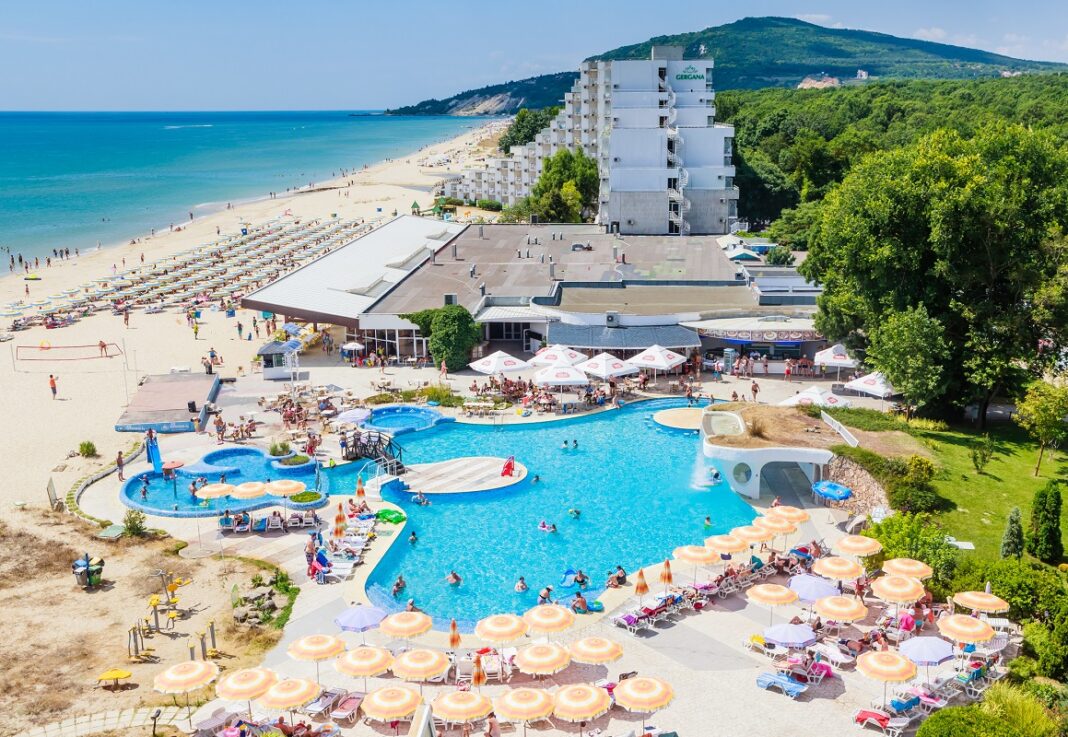THINGS TO DO WITH KIDS IN ALBENA:
1. OLD NESSEBAR:

Nessebar is one of the oldest cities in Europe – the first mention of it was found in a manuscript that is over 3,000 years old! The city is quiet, charming and impressively beautiful. Its narrow, cobbled streets and small wooden buildings create a unique atmosphere of antiquity. It is important to note that Old Nesebar is now a museum city and is included in the UNESCO World Heritage List. Fantastic landscapes coupled with historical monuments that are found here almost at every step attract not only ordinary tourists, but also representatives of the bohemian world.
Where else to look for inspiration and peace from the bustle of the world, if not here? Walking along the cobbled streets of Old Nesebar, you can easily meet a famous artist, writer or actor. And the city is truly inspiring… It is surrounded by the remains of fortress walls built by the ancient Thracians, and the very old Eastern Gate of Nesebar is crowned with two beautiful pentagonal turrets. On the territory of the settlement you will see a large number of churches, however, only one of them is still functioning – the Church of the Holy Mother of God, which has a miraculous icon. Every August, thousands of pilgrims from all over the world come to bow to it.
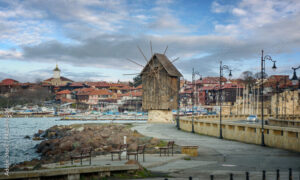
Next to each historical site of the city there are information boards, allowing tourists to explore the ancient city without a guide. Families who came to Old Nessebar with children can alternate sightseeing with rest on one of the playgrounds that can be found on the streets of the city. Many cute souvenir shops with a huge number of different trinkets and souvenirs are another exciting activity, especially since in the shops you can see many items and toys for young tourists. Old Nessebar occupies a very small peninsula, the width of which barely reaches 300 meters, and the length is just over 800 meters. The peninsula has a thin connection with the mainland in the form of a narrow isthmus, which during the raging sea is completely flooded by waves. The solitude and remoteness from the modern world are especially felt here in bad weather, when the old town is cut off from the mainland. However, this phenomenon is not to be feared – with the end of the storm, the narrow streets are again filled with newly arrived tourists.
First of all, they hurry to the main attraction of the city – an ancient three-story mill, built during the Bulgarian Revival. It is located at the very entrance to Nessebar. The famous throughout Bulgaria Nessebar retro parade starts from this ancient city symbol. The city continues to carry out spot development, while houses are allowed to be built exclusively in the old style. This means that the buildings must have a stone first floor and a wooden second. In this way, the authorities are trying to preserve the unique spirit of the old city. If you find yourself in Old Nessebar late in the evening, you can not worry about lodging – there are a large number of hotels and inns located in old houses. We recommend a trip to Old Nessebar to guests of the southern coast of Bulgaria. You can easily get to this city on foot from the new Nesebar and by car and public transport from Pomorie, Sunny Beach, Sozopol, Sveti Vlas and a number of other resorts. The main thing to keep in mind is the peculiarity of the city streets. They are all paved with stone and cobblestones, which makes it difficult to move around with a baby carriage. Therefore, it is better to postpone a trip to Nesebar with a small child until better times.
2. VARNA ARCHAEOLOGICAL MUSEUM:
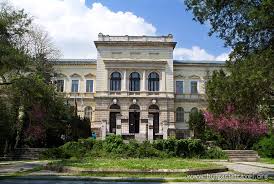
How to find a gold treasure? For example, arm yourself with old maps, a pick and a shovel, board a ship and go to where the pirates could hide the stolen treasure. But a much more reliable way is to visit the Varna Archaeological Museum, where the oldest of the discovered gold treasures is kept. If your child delightedly examines every pebble or piece of glass dug up on the beach, then it’s time to introduce him to real archaeological finds. Among the attractions of Bulgaria, this museum occupies a special place. This is one of the largest museums in the country, opened at the beginning of the 20th century thanks to the efforts of the Varna Archaeological Society. But the main treasure of the museum, the very same gold treasure, was discovered only in 1972, during excavations of a necropolis in the territory of Varna. The total weight of gold jewelry, clothing items and tools made of precious metal is more than 6 kg, and all these items were made in 5 thousand BC.
The Varna Archaeological Museum covers the history of the Balkans and the Black Sea region from the Paleolithic era to the late Middle Ages. Its halls display about 50 thousand exhibits. The exposition is located in 36 halls. But do not be afraid of such numbers – you can see the entire collection with a child in an hour and a half. The first part of the exhibition is dedicated to the Paleolithic, Neolithic, Chalcolithic and Early Thracian periods. Here you can see not so primitive objects of work and life, as well as quite expressive figurines of animals and people. It is in this part of the museum that the finds from the Varna necropolis are exhibited.
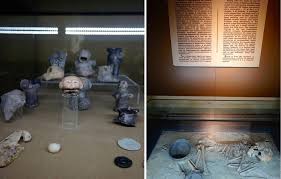
Much attention is paid to the Thracian culture – according to scientists, modern Bulgarians are the ancestors of the Thracians. Items dating back to this period are made mainly of bronze and are distinguished by great elegance. The Thracians knew how to make excellent weapons, and for casting gold jewelry they created bronze molds with complex patterns. One of the exhibits that children often stop by is an ancient coin in the shape of a dolphin. The exhibition dedicated to antiquity illustrates the life of Odessos (the Roman name for Varna) during the Hellenistic era, the Roman conquests and early Christianity. Particular attention is paid to religious beliefs and burial traditions of that time.
Here you can also learn about how the city grew and developed, who traded with and what the locals were interested in. The museum has a rich collection of antique ceramics and marble tombstones. Several more halls cover the Middle Ages – the time of wars and the creation of the first Bulgarian state. This was also the time of the baptism of the Bulgarians, so here you can see a rich collection of icons and church utensils. If you are interested in the ancient history of the country, we recommend visiting other museums in Bulgaria, for example, the Antique Village complex in the village of Neofit Rilski.
3. AQUAPARK AQUAPOLIS :
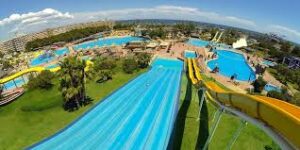
Aquapark Aquapolis in Golden Sands is considered one of the most beautiful in Eastern Europe due to its successful design in the Moorish-Mediterranean style and harmonious natural surroundings (the park is located on a hill, surrounded by forest and with a wonderful panoramic view of the sea and the resort). In terms of technical equipment, the water park cannot boast of any uniqueness, offering a standard set of water slides and attractions, but, in any case, for both children and adults, a visit to this place can be a great addition to their vacation. The area of the complex is 40,000 sq. m. The entire territory can be divided into three parts: an extreme zone with breathtaking slides, an adult recreation area with a separate pool, the Slow River attraction, and a relaxation zone with a jacuzzi and hydromassage. It is also worth mentioning the water slides, for which most vacationers flock here. So, you will be pleased with:
• an open slide “Wild River” 2 meters wide, imitating a winding and uneven river, along which visitors go down on circles;
• a straight high-speed water slide “Niagara”;
• an attraction “Black Hole” – two closed dark pipes, along which visitors go down on circles, overcoming unexpected turns;
• a 4-lane slalom slide is a good entertainment for a group of friends who can compete with each other for speed;
• a breathtaking high-speed slide “Kamikaze”, designed for people who love extreme sensations. The launch occurs from a platform 18 meters high with a maximum speed of 60 km / h;
• “Slow River” 300 m long, allowing you to meditate a little, enjoying the gentle sun and calm water flow.
In the children’s area for little ones there is a shallow pool with slides of various sizes, as well as figures of a turtle, two dinosaurs and a large dragon slide. Additionally, children can shoot at the shooting range, jump on a bungee trampoline, ride on remote-controlled boats or crawl on a children’s climbing rock under the supervision of experienced instructors.
Additional services on the territory of the Aquapolis complex:
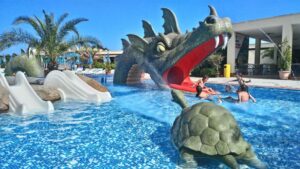
- information desk (located next to the ticket office);
• a rescue team consisting of 32 specially trained people;
• a medical center with a team to provide emergency care and a constant presence of an ambulance;
• massage parlor;
• individual safes for storing personal belongings;
• sun loungers, mattresses and umbrellas;
• photo services;
• souvenir shop;
• currency exchange;
• guarded parking (100 parking spaces for cars and 10 for buses), for a fee;
• fast food restaurant “Ambrosia”;
• a la carte restaurant “Arcadia”;
• pool bar “Neptune”;
• panoramic snack bar “Alcazar”.
4. FESTA DOLPHINARIUM:
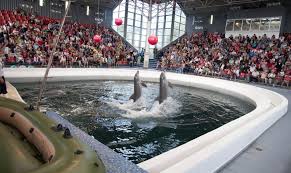
In the northern part of the Seaside Park there is a dolphinarium, which, according to numerous visitors, is the best on the entire Balkan Peninsula. The dolphinarium has been operating since 1984, visitors are located on stands arranged in a square. The dolphin show can be watched by 1,200 guests of the establishment at the same time. As is known, dolphins practically do not reproduce in captivity, but in the Varna dolphinarium there have already been 2 cases of the birth of cubs by underwater mammals. This indicates that they love animals very much and provide them with proper care.
Children enjoy attending shows of the smartest representatives of the marine fauna. The animals perform unique acrobatic numbers and a variety of figures in the air, whistle songs, balance on the water, juggle balls, jump through rings and other obstacles, dance to music, participate in games with visitors, which causes genuine delight in children. Local dolphins love their guests very much, they are sincerely happy to see everyone who came to watch their show. The audience will enjoy funny jokes, entertainment, interesting competitions. Your children will be interested not only in watching the dolphins’ performance, but also in listening to the trainers’ commands, because the show is conducted in four languages, one of which is Russian.
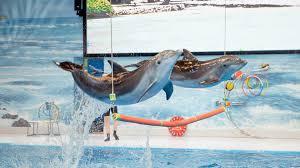
The forty-minute performance of smart animals is watched in one breath, and after it, guests of the establishment can go to the cafe and have a snack. Through the large panoramic glass, you can clearly see how the artists play and frolic underwater in the demonstration pool. Separately, I would like to say about the possibility of visiting the dolphinarium outside the official show program for people with health problems. At their numerous requests, such a service was regulated by the authorities. Dolphins are known as excellent healers – therapy for communicating with these animals is used to treat autism and cerebral palsy.
Especially for special people, every Sunday in the Varna dolphinarium there is a therapeutic program of communication with mammals. No appointment is required to visit, just come during the designated hours. The process of watching dolphins swim, train, feed, and swimming with them has a calming effect and helps improve the disease. A visit to the Varna Dolphinarium is one of the must-see entertainment programs at the famous Bulgarian resort. Your children will certainly remember the exciting show program with the participation of smart dolphins.
5. PIRATE SHIP:
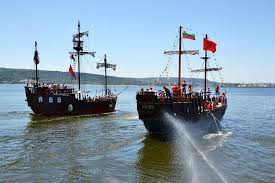
“Yo-ho-ho and a bottle of rum!” – you want to sing when you go to a pirate party from the pier of Nessebar or Varna. Do you suffer from seasickness? Don’t know yet? It’s time to test your body on a pirate schooner, going out to the open sea! So, if you have decided to go for adventure, then a pirate party is just what you need. Children are usually especially delighted with this sea excursion. However, parents do not have to be bored during a walk under the Jolly Roger flag.
A few hours on the open sea in the company of the same adventurers dressed as pirates is incredibly interesting and fun. A pirate party can in no way be called an excursion, it is more like a theatrical performance with your obligatory participation. Setting off on a pirate schooner, you turn into sea robbers for a few hours. You are given all the necessary uniforms, one eye is covered with a bandage, they apply make-up, draw on a moustache, beard, sea tattoos, the children are dressed as pirate cabin boys – and, voila, the bandit gang is ready! The process of turning peaceful tourists into bloodthirsty filibusters includes a mandatory pirate initiation ritual.
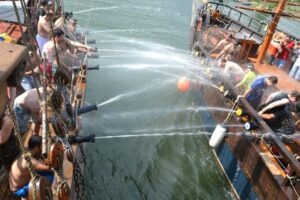
It is incredibly interesting, the children accept it with delight. Get ready to repel an attack – your schooner is being stormed by the enemy! Board! After a short staged fight with the enemy ship, the pirates, of course, win a complete and unconditional victory. The children rejoice and rejoice, the parents do not hide their touching smiles – everyone is having fun! After the enemy has capitulated, it is time to celebrate this event with a grand feast. Children are allowed to swim, fish, and for the parents at this time the adult show begins. The animators tell a variety of original jokes, arrange comic contests and mini-performances with the participation of tourists.
It’s time to have a snack and wet your throat a little – the price of the trip includes lunch and drinks. During this amazingly interesting pirate excursion, you and your children will have plenty of fun playing sea robbers, finding treasure (fifteen people per dead man’s chest), fighting a Bulgarian ship attacking you in the open sea, and participating in a large number of fun attractions. At the end of the sea trip, the little guests of the pirate schooner will receive memorable gifts and diplomas confirming that they have become real filibusters. Do not forget to take a swimsuit, a towel and comfortable shoes with you. A trip on a pirate schooner is not recommended for children with a weak vestibular apparatus.
